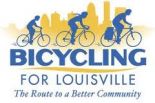How many people are truly engaged in biking and walking at the city, state, and national level, including in niche categories such as BMX? Where are these numbers peaking, and where are they waning? Resources in this folder will help you determine the numbers you need to make your case.
2007 Benchmarking Spreadsheet: Bicycling & Walking in the US (Alliance for Biking & Walking) This spreadsheet contains data collected for Alliance's 2007 Benchmarking Report on bicycling and walking in the U.S. Tabs differentiate between data for the 50 states and the top 50 most-populous cities. Data collected here includes bicycling and walking modeshare, demographics, safety statistics, funding for bicycling and walking, policies at the state and local level, and more.
This spreadsheet contains data collected for Alliance's 2007 Benchmarking Report on bicycling and walking in the U.S. Tabs differentiate between data for the 50 states and the top 50 most-populous cities. Data collected here includes bicycling and walking modeshare, demographics, safety statistics, funding for bicycling and walking, policies at the state and local level, and more.
2007 Benchmarking Spreadsheet: Bicycling & Walking in the US (XLS)(567KB)
Active Transportation Beyond Urban Centers (Rails-to-Trails Conservancy) This 2012 report from the Rails-to-Trails Conservancy — Active Transportation Beyond Urban Centers: Walking and Bicycling in Small Towns and Rural America — highlights that, contrary to common belief, bicycling and walking rates in rural regions are comparable to those in urban areas; that federal investment in active transportation in rural areas is significant; and this investment pays large dividends for local communities and economies.
This 2012 report from the Rails-to-Trails Conservancy — Active Transportation Beyond Urban Centers: Walking and Bicycling in Small Towns and Rural America — highlights that, contrary to common belief, bicycling and walking rates in rural regions are comparable to those in urban areas; that federal investment in active transportation in rural areas is significant; and this investment pays large dividends for local communities and economies.
Beyond Urban Centers: Walking and Bicycling in Small Towns and Rural America (PDF)
Analysis of Bicycling Trends and Policies in Large North American Cities (J Pucher, R Buehler) The study, released in March 2011, authored by professors John Pucher (Rutgers University) and Ralph Buehler (Virginia Tech), looked at bicycling growth patterns and crash statistics over 20 years in Chicago, Minneapolis, Montreal, New York, Portland, San Francisco, Toronto, Vancouver, and Washington, DC. The dense, 62-page report also looked at national and regional data.
The study, released in March 2011, authored by professors John Pucher (Rutgers University) and Ralph Buehler (Virginia Tech), looked at bicycling growth patterns and crash statistics over 20 years in Chicago, Minneapolis, Montreal, New York, Portland, San Francisco, Toronto, Vancouver, and Washington, DC. The dense, 62-page report also looked at national and regional data.
Analysis of Bicycling Trends and Policies in Large North American Cities: Lessons for New York (PDF)
Bicycle Industry Vital Statistics How many bicycles are sold each year? What types of specialty bikes are most popular? How many bike shops are there anyways? Check out these vital statistics on the bicycle industry from the National Bicycle Dealers Association.
How many bicycles are sold each year? What types of specialty bikes are most popular? How many bike shops are there anyways? Check out these vital statistics on the bicycle industry from the National Bicycle Dealers Association.
Bicycle Industry Stats. (URL)
Bicycling Renaissance in North America? An Update and Re-Appraisal (J Pucher, R Buehler, M Seinen) The paper, released in pre-print version in April 2011, was authored by professors John Pucher (Rutgers University), Ralph Buehler (Virginia Tech) and Mark Seinen (Rutgers University). It reviews trends in cycling levels, safety, and policies over 20 years in Chicago, Minneapolis, Montreal, New York, Portland, San Francisco, Toronto, Vancouver, and Washington, DC. The dense, 76-page report also looked at national and regional data.
The paper, released in pre-print version in April 2011, was authored by professors John Pucher (Rutgers University), Ralph Buehler (Virginia Tech) and Mark Seinen (Rutgers University). It reviews trends in cycling levels, safety, and policies over 20 years in Chicago, Minneapolis, Montreal, New York, Portland, San Francisco, Toronto, Vancouver, and Washington, DC. The dense, 76-page report also looked at national and regional data.
Bicycling Renaissance in North America? (PDF)(1.4MB)
Bicycling Stats (2000)
Here are some oft-quoted statistics from 2000, including how many people ride bikes, why people ride bikes, bikes sold each year, bikes stolen each year, and some other bicycling facts; 5 pages
Bicycling Numbers (DOC) (42KB)
Bike Coordinators and Sharrows Survey, Various Cities
28 cities in the US and Canada were surveyed in 2008 to see which have bike coordinators and which have implemented sharrows.
Bike Coordinators and Sharrows Survey, Various Cities (Excel) (16KB).
BMX Access in Skateparks Survey Report (Bikes Belong) This 2009 report outlines the results from a survey of nearly 100 skatepark managers from 30 states conducted in order to see how Freestyle BMX bikers have successfully gained access to skateparks and how skateparks have safely and effectively managed bikers and skaters.
This 2009 report outlines the results from a survey of nearly 100 skatepark managers from 30 states conducted in order to see how Freestyle BMX bikers have successfully gained access to skateparks and how skateparks have safely and effectively managed bikers and skaters.
BMX Access in Skateparks Report (PDF) (3 MB)
Cycling Trends and Policies in Canadian Cities (World transport Policy and Practice)
This report focuses on cycling in six major areas of Canada and how the country's recent changes have affected the way Canadians think about and engage in cycling.
Cycling Trends and Policies in Canadian Cities (PDF) (244KB)
Getting Local Statistics (c) Tips on getting local statistics from Barry Zalph of Bicycling for Louisville.
Tips on getting local statistics from Barry Zalph of Bicycling for Louisville.
Getting Local Statistics (DOC) (23KB)
Making Transportation Sustainable: Insights from Germany A 2009 article by John Pucher, of the Metropolitan Policy Program at the Brookings Institution, co-authored with Ralph Buehler and Uwe Kunert. Puchner argues that increasing transportation sustainability in the United States requires policies that foster changes in travel behavior. Germany's case may provide a helpful example. Although car use has grown in both countries, Germany has been far more successful than the United States in creating a more balanced transportation system.
A 2009 article by John Pucher, of the Metropolitan Policy Program at the Brookings Institution, co-authored with Ralph Buehler and Uwe Kunert. Puchner argues that increasing transportation sustainability in the United States requires policies that foster changes in travel behavior. Germany's case may provide a helpful example. Although car use has grown in both countries, Germany has been far more successful than the United States in creating a more balanced transportation system.
Making Transportation Sustainble: Insights from Germany (PDF) (156KB)
Mode Shift: Philadelphia's Two-Wheeled Revolution in Progress (Bicycle Coalition of Greater Philly) This May 2011 report produced by the Bicycle Coalition of Greater Philadelphia takes a comprehensive look at the dramatic rise in bicycling in Philadelphia, drawing on the BCGP's own bicycle counts and highlighting how infrastructure influences gender mode share and rider behavior.
This May 2011 report produced by the Bicycle Coalition of Greater Philadelphia takes a comprehensive look at the dramatic rise in bicycling in Philadelphia, drawing on the BCGP's own bicycle counts and highlighting how infrastructure influences gender mode share and rider behavior.
Mode Shift- Philadelphia's Two-Wheeled Revolution in Progress (PDF)
National Bicycling and Walking Study: 15-Year Status Report This 2010 report from the Pedestrian and Bicycle Information Center is the third status update to the National Bicycling and Walking Study, originally published in 1994 as an assessment of bicycling and walking as transportation modes in the United States. Following the 5-year status report (1999) and 10-year status report (2004), the 15-year update measures the progress made toward the original goals of lowering the number of fatalities while increasing the percentage of trips made by bicycling and walking.
This 2010 report from the Pedestrian and Bicycle Information Center is the third status update to the National Bicycling and Walking Study, originally published in 1994 as an assessment of bicycling and walking as transportation modes in the United States. Following the 5-year status report (1999) and 10-year status report (2004), the 15-year update measures the progress made toward the original goals of lowering the number of fatalities while increasing the percentage of trips made by bicycling and walking.
The National Bicycling and Walking Study- 15-Year Status Report. (PDF) (1.2MB)
Overlooked Density: Re-Thinking Transportation Options in Suburbia (ORTEC)
This March 2011 report from the Oregon Transportation Research and Education Consortium explores pedestrian connectivity in suburban multifamily housing and investigates the link between mode choice and connectivity. "The data indicates that there is a significant difference between the travel behaviors of residents in well-connected versus less-connected developments. A greater percentage of residents of well-connected developments "ever walk or bike" to their local commercial area (73%) than residents of less-connected developments (58%). In addition, walking trips to the LCA are nearly twice the percentage of total trips in well-connected developments (43.0%) versus less-connected developments (23.7%). Dispelling commonly held beliefs about the amount of walking and biking occurring in suburbia, our study shows that more than a third of all trips to the LCA by residents of both groups are active travel trips."
Overlooked Density: Re-Thinking Transportation Options in Suburbia (PDF)
Retailers and Advocacy Report (Bikes Belong) This 2009 report presents a survey of 116 retailers from 34 states which was commissioned to better understand how bicycle retailers perceive and support bicycle advocacy—local, regional, and national.
This 2009 report presents a survey of 116 retailers from 34 states which was commissioned to better understand how bicycle retailers perceive and support bicycle advocacy—local, regional, and national.
Retailer and Advocacy Report (PDF) (5.4 MB)
The Size and Impact of Road Riding Events (Bikes Belong) This report presents a survey of U.S. recreational bike-event promoters in order to estimate the size, number, and direct economic impact of these rides in 2008, and also to learn more about how these events benefit communities and causes nationwide.
This report presents a survey of U.S. recreational bike-event promoters in order to estimate the size, number, and direct economic impact of these rides in 2008, and also to learn more about how these events benefit communities and causes nationwide.
The Size and Impact of Road Riding Events (PDF) (1MB)
Travel to School: The Distance Factor (National Household Travel Survey) This is a National Household Travel Survey (NHTS) brief that looks at the affect of distance on travel to school. The brief sums up data from the 1969 and 2001 NHTS on how kids get to school.
This is a National Household Travel Survey (NHTS) brief that looks at the affect of distance on travel to school. The brief sums up data from the 1969 and 2001 NHTS on how kids get to school.
Travel to School: The Distance Factor (NHTS) (PDF) (35.4KB)
U.S. Census Data Your source for population, housing, economic, and geographic data from the U.S. Census Bureau. Search Trips to Work for data on bicycling, walking and transit mode share information.
Your source for population, housing, economic, and geographic data from the U.S. Census Bureau. Search Trips to Work for data on bicycling, walking and transit mode share information.
American Fact Finder - U.S. Census (URL)
Why Canadians Cycle More Than Americans This paper by John Pucher and Ralph Buehler, and published in Transport Policy in 2006, explores why cycling levels are three times higher in Canada than in the U.S. despite colder climates. Higher residential density, lower incomes, and higher costs of owning and driving a car are a few of the explanations considered.
This paper by John Pucher and Ralph Buehler, and published in Transport Policy in 2006, explores why cycling levels are three times higher in Canada than in the U.S. despite colder climates. Higher residential density, lower incomes, and higher costs of owning and driving a car are a few of the explanations considered.
Why Canadians Cycle More Than Americans (PDF)(383KB)

